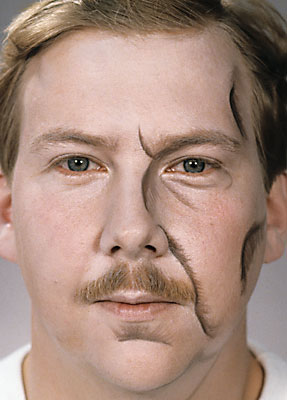Important areas for shading are the eye sockets, the temples, the side of the nose and below the cheekbones. The vertical frown wrinkle and the naso-labial ('nose-lip') fold are also important areas to shadow.
On an older person the skin, where there is little or no bone, is sunken. On a younger person these parts are darkened (shadowed), the skin will appear to be really sunken at that spot.
When you age somebody with a spherical, round face the bone structure is hardly visible. In this case, do not shade the cheekbone on the round cheeks below, but emphasize on the cheeks. Draw a line below the nose-lips line that goes underneath the cheeks, for a baggy effect.












